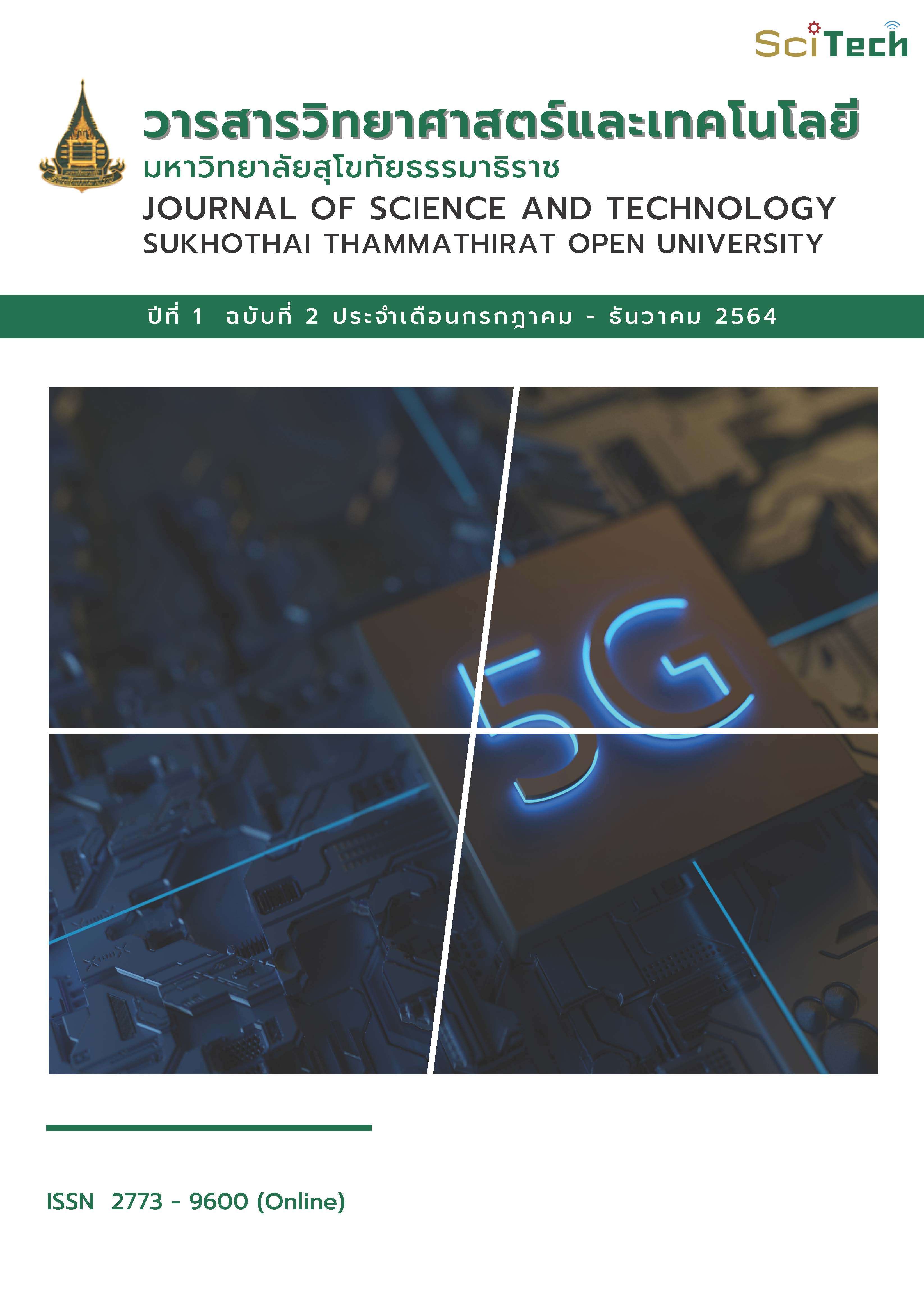การศึกษาที่ครอบคลุมด้านการออกแบบและประสิทธิภาพของรหัสโพลาร์สำหรับมาตรฐาน 5G
Keywords:
5G, รหัสโพลาร์, ช่องสัญญาณควบคุม, มาตรฐานการสื่อสารไร้สายในยุคที่ 5Abstract
มาตรฐานการสื่อสารไร้สายยุคที่ 5 หรือมาตรฐาน 5G มีรหัสช่องสัญญาณที่ถูกเลือกใช้งานอยู่ 2 ชนิด ได้แก่ รหัสแอลดีพีซี กรณีใช้ในช่องสัญญาณข้อมูล และรหัสโพลาร์ กรณีใช้ในช่องสัญญาณควบคุม ทั้งนี้ รหัสโพลาร์ได้ให้สมรรถนะการแก้ไขบิตผิดที่ดีกว่ารหัสแอลดีพีซีกรณีข้อมูลที่ใช้สื่อสารมีขนาดสั้น จึงถูกเลือกใช้สำหรับช่องสัญญาณควบคุมในมาตรฐาน 5G ในบทความนี้จึงสนใจการศึกษาการเข้ารหัสโพลาร์ในมาตรฐาน 5G โดยบทความได้นำเสนอรายละเอียดของกระบวนการเข้ารหัสโพลาร์ตามมาตรฐาน 5G และอธิบายถึงเหตุผลและข้อกำหนดของการออกแบบกระบวนการเข้ารหัส นอกจากนั้นบทความยังศึกษาถึงสมรรถนะของรหัสโพลาร์ตามมาตรฐาน 5G โดยทำการเปรียบเทียบสมรรถนะของรหัสโพลาร์สำหรับช่องสัญญาณอัปลิงก์และดาวน์ลิงก์ ที่มีความยาวคำรหัส ความยาวเพย์โหลด และอัตรารหัสที่เท่ากัน ภายใต้การถอดรหัสหักล้างต่อเนื่องแบบลิสที่มีขนาดลิสที่เท่ากัน ผลลัพธ์แสดงให้เห็นถึงรหัสสำหรับช่องสัญญาณอัปลิงก์ที่ให้สมรรถนะที่ดีกว่า ซึ่งอาจชดเชยการสื่อสารที่สามารถถูกรบกวนด้วยสัญญาณรบกวนได้โดยง่าย
References
rd Generation Partnership Project. (1999, April). Multiplexing and channel coding (FDD). 3GPP TS 25.212 V.1.0.0. Author.
rd Generation Partnership Project. (2007, Mar). Multiplexing and channel coding. 3GPP TS 36.212 V.1.0.0. Author.
rd Generation Partnership Project. (2017, Sep). Multiplexing and channel coding. 3GPP TS 38.212 V.1.0.0. Author.
Arikan, E. (2009). Channel polarization: A method for constructing capacity-achieving codes for symmetric binary-input memoryless channels. IEEE Transactions on information Theory, 55(7), 3051-3073.
Bioglio, V., Condo, C., & Land, I. (2020). Design of polar codes in 5G new radio. IEEE Communications Surveys & Tutorials, 23(1), 29-40.
Chen, J., Chen, Y., Jayasinghe, K., Du, D., & Tan, J. (2017, December). Distributing CRC bits to aid polar decoding. In 2017 IEEE Globecom Workshops (GC Wkshps) (pp. 1-6). IEEE.
Chen, K., Niu, K., & Lin, J. R. (2013, September). An efficient design of bit-interleaved polar coded modulation. In 2013 IEEE 24th Annual International Symposium on Personal, Indoor, and Mobile Radio Communications (PIMRC) (pp. 693-697). IEEE.
Condo, C., Hashemi, S. A., & Gross, W. J. (2017). Blind detection with polar codes. IEEE Communications Letters, 21(12), 2550-2553.
He, G., Belfiore, J. C., Land, I., Yang, G., Liu, X., Chen, Y., ... & Tong, W. (2017, December). Beta-expansion: A theoretical framework for fast and recursive construction of polar codes. In GLOBECOM 2017-2017 IEEE Global Communications Conference (pp. 1-6). IEEE.
IMT-2020 TECH PERFREQ. (2016, Oct). Minimum Requirements Related to Technical Performance for IMT2020 Radio Interface(s). ITU-R M. Author.
Niu, K., & Chen, K. (2012). CRC-aided decoding of polar codes. IEEE communications letters, 16(10), 1668-1671.
Samsung. (2017, June). Design of Unified Rate-Matching for Polar Codes. Qingdao, China: 3GPP TSG RAN WG1 NR Ad-Hoc2, R1-1710750.
Tal, I., & Vardy, A. (2015). List decoding of polar codes. IEEE Transactions on Information Theory, 61(5), 2213-2226.
Zhang, H., Li, R., Wang, J., Dai, S., Zhang, G., Chen, Y., ... & Wang, J. (2018, May). Parity-check polar coding for 5G and beyond. In 2018 IEEE International Conference on Communications (ICC) (pp. 1-7). IEEE.



